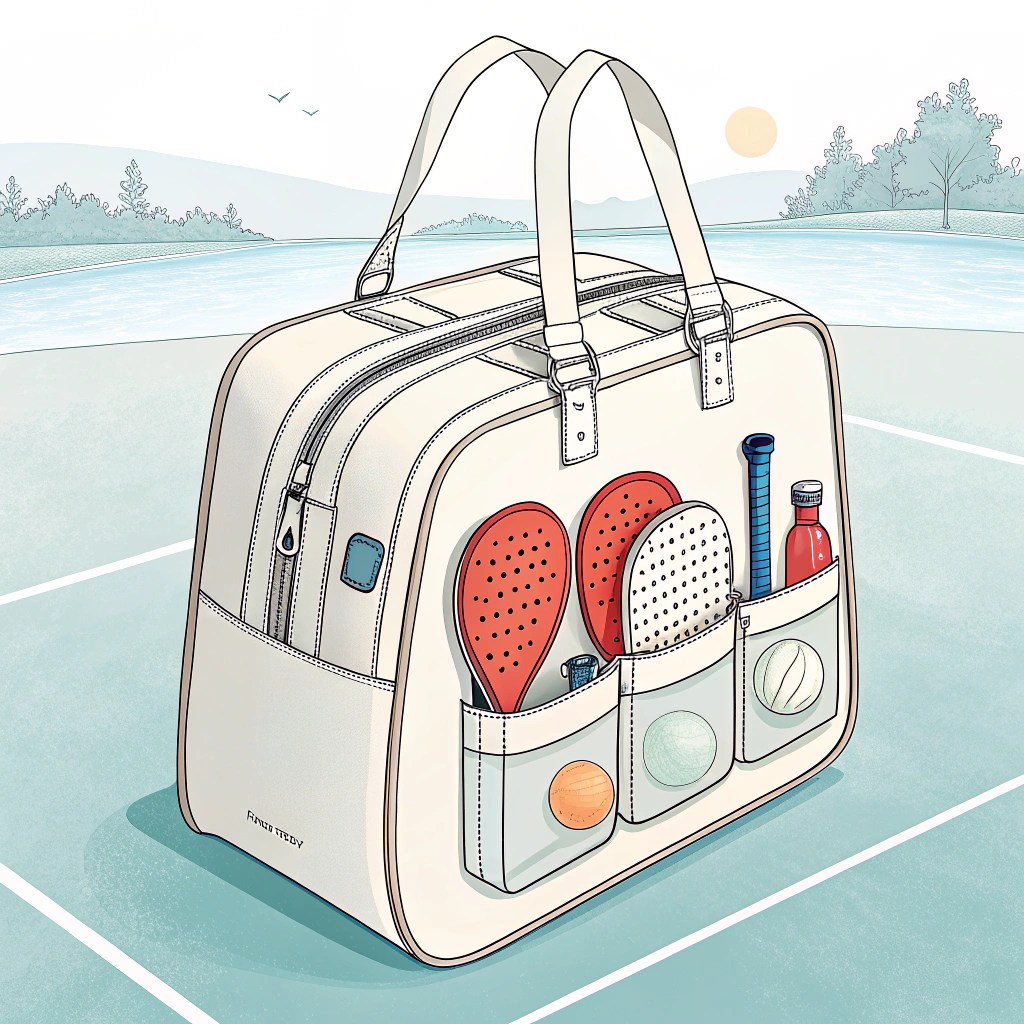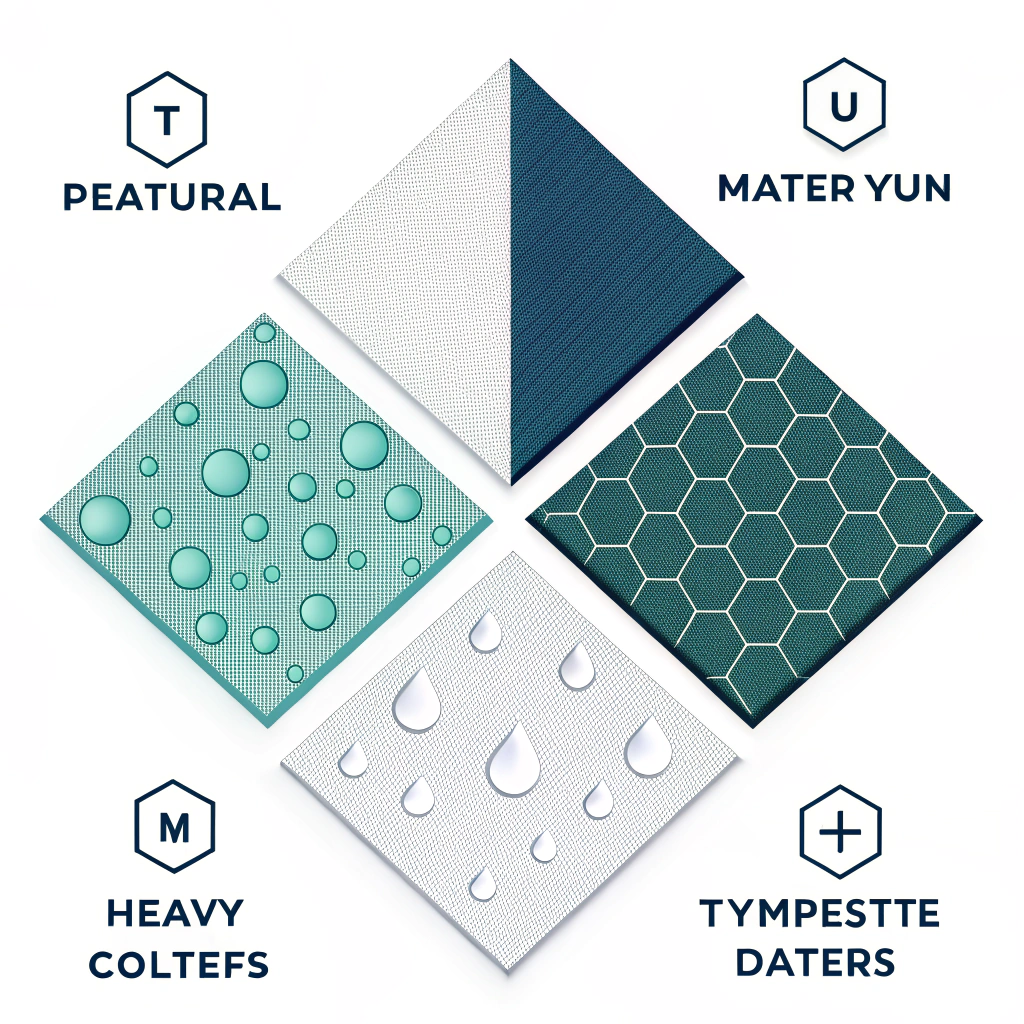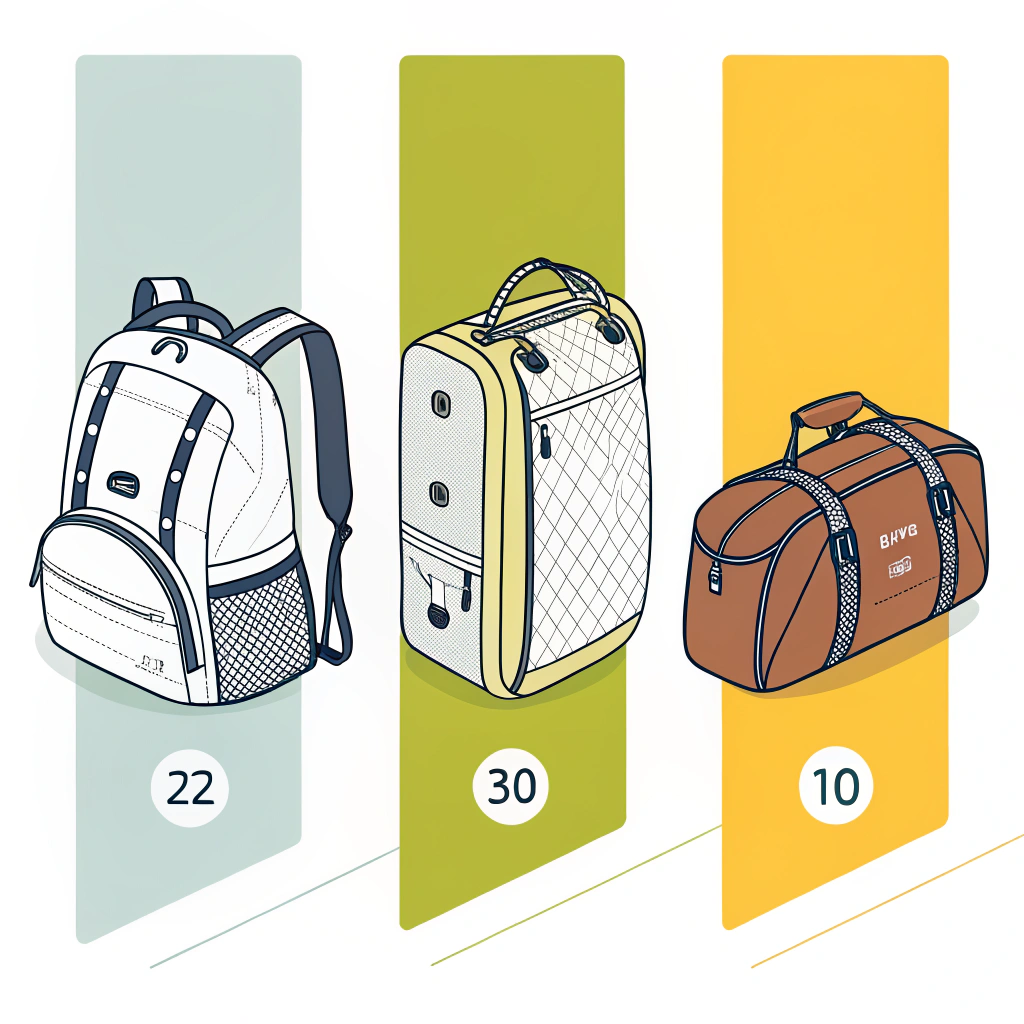A top-tier outdoor pickleball carrying bag1 should combine robust, weather-resistant2 materials with intelligently designed storage and ergonomic features. This ensures that the bag not only protects your paddles and accessories under challenging outdoor conditions but also facilitates effortless transportation during busy tournaments or retail environments.
Understanding the Demands of Outdoor Pickleball Carrying Bags
For business buyers in sports distribution or retail chains, sourcing a high-quality carrying bag is as critical as the paddle itself. Outdoor pickleball enthusiasts demand not only durability from their equipment but also innovation in design that enhances convenience and performance. A well-designed bag addresses common pain points such as weight management, protection against rain and dust, and the need to organize multiple items like paddles, balls, rackets, and personal effects while on the move.
Outdoor use necessitates weather-resistant materials that can stand up to rain, intense sun, and sudden temperature shifts. Additionally, the bag’s build must be robust enough to accommodate high-usage scenarios including long travel distances, frequent handling, and exposure to rough surfaces. When evaluating products that will eventually enter your distribution portfolio, technical details and performance metrics are paramount.
Key Features to Consider
Before making a purchase decision, business buyers should carefully analyze and compare various features of pickleball carrying bags. The following key features are critical:
• Durability – The bag should be constructed from high-quality, tear-resistant materials. Reinforced stitching and durable zippers add to the longevity of the product.
• Weather Resistance – Materials such as waterproof nylon or TPU coatings ensure that contents remain dry even in heavy rain. A weather-resistant design also enhances the bag’s usability in extreme conditions.
• Storage Capacity – Adequate pocket space for at least 2 paddles, balls, accessories, and other personal effects is essential. Integrated compartments help in the systematic organization of items, which is vital for both casual and competitive players.
• Ergonomic Design3 – Comfort is equally important. Adjustable straps, padded backs, and balanced weight distribution ensure the bag does not strain the carrier. Ergonomic features make the bag suitable for long periods of wear.
• Customization Options – Custom branding or color customization can be crucial for retail distribution, allowing companies to differentiate their merchandise.
• Design Innovation – Modern designs often incorporate multi-functional features, such as compartments that can double as a hydration pack or additional ventilation systems for storage areas.
A summary table is provided below to compare these features across different product types commonly found in the market:
| Feature | Description | Importance Level (High/Medium/Low) |
|---|---|---|
| Durability | Tear-resistant materials, reinforced stitching | High |
| Weather Resistance | Waterproof fabrics, water-repellant coatings | High |
| Storage Capacity | Adequate compartments for paddles, accessories, personal effects | Medium |
| Ergonomic Design | Adjustable straps, padded backs, balanced weight distribution | High |
| Customization Options | Branded designs, color variations | Medium |
| Design Innovation | Multifunctional compartments, integrated hydration holders | Medium |
Material and Construction Comparison
Selecting the right material for a pickleball carrying bag is crucial from a performance and longevity perspective. Different materials offer varying levels of durability and resistance to weather. Let’s take a closer look:
- Waterproof Nylon – Often used for its excellent weather-resistant properties, waterproof nylon offers a superb balance between light weight and strength. It is popular for bags designed for frequent outdoor use.
- TPU-Coated Fabrics4 – Thermoplastic polyurethanes (TPU) provide a strong, flexible, and waterproof layer, ensuring that even under heavy rain conditions, the bag performs robustly.
- Heavy-Duty Polyester – Known for its tear resistance and robustness, polyester is widely utilized in bags that need to withstand abrasions and extended periods of rough handling.
- Composite Material Options5 – Some advanced carrying bags may use a combination of materials to leverage the advantages of each. For instance, integrating a waterproof outer layer with a padded interior ensures both protection and comfort.
A comparative look at these materials in the context of pickleball carrying bags is outlined in the table below:
| Material Type | Advantages | Potential Limitations |
|---|---|---|
| Waterproof Nylon | Light weight, excellent weather resistance | Can be less durable under extreme abrasion |
| TPU-Coated Fabrics | Highly water resistant, flexible | Slightly heavier, higher cost |
| Heavy-Duty Polyester | Superior tear resistance, robust | May not offer the highest water resistance |
| Composite Constructions | Combines benefits of multiple materials | Complexity in manufacturing, higher pricing |
Integrating these materials into bag design can help you meet the market demands for high-performance, weather-resistant outdoor carrying bags.
Performance Metrics and Case Studies
In today’s competitive retail environment, understanding real-world performance metrics is key. Multiple performance tests have revealed that the storage integrity and durability of outdoor pickleball bags are directly influenced by the choice of materials and construction techniques. Several case studies and field evaluations from major tournaments provide useful insights:
• In one study conducted during a weekend tournament, bags made from TPU-coated fabrics maintained water resistance even under intense downpours, while still managing to evenly distribute the weight of 2 paddles, 3 balls, and other essentials.
• A case study from a sports distribution company indicated that ergonomic design not only increased customer satisfaction but also reduced product returns due to complaints regarding shoulder discomfort. Customers highlighted the benefit of padded straps and adjustable designs.
• Retailers who offered customised bag options reported a higher conversion rate, as the ability to brand the bag resonated well with professional teams and clubs looking for identity reinforcement.
These cases clearly demonstrate that a balance of durability, weather resistance, and ergonomic design can significantly enhance the product’s market competitiveness.
Comparison of Popular Options in the Market
When businesses compare different brands of pickleball carrying bags, often the discussion centers on product type, storage capacity, material quality, and additional features. Let’s discuss a few popular options:
- Backpacks – Known for their ability to distribute weight evenly across the shoulders, backpacks are a favorite for active players. They typically feature multiple compartments for paddles, accessories, and even personal items such as water bottles.
- Duffle Bags – Offering larger storage volumes, duffle bags are ideal for players who need to carry extra equipment. Though less ergonomic than backpacks, advanced designs have incorporated padded handles and adjustable straps.
- Compact Daypacks – Suitable for short trips and minimal gear, these bags are lightweight and robust. They might not hold as much as a duffle, but their ease of use makes them attractive for everyday use among recreational players.
Below is an overview table comparing these three types based on several important criteria:
| Bag Type | Capacity | Primary Material | Key Advantage | Ideal User |
|---|---|---|---|---|
| Backpack | Medium | Waterproof Nylon / TPU | Weight distribution, comfort | Competitive players, frequent travelers |
| Duffle Bag | High | Heavy-Duty Polyester / Composite | Large storage, versatility | Teams, club events |
| Compact Daypack | Low to Medium | Lightweight materials or hybrid fabrics | Portability, ease of access | Recreational players, daily use |
This comparative approach helps business buyers make data-driven decisions tailored to specific market segments or target consumer groups.
Implementation and Customization Considerations
When incorporating a new product line like the pickleball carrying bag into your retail or distribution portfolio, it is prudent to keep several implementation factors in mind:
• Quality Assurance – Ensure that the bag undergoes rigorous quality tests to verify both material strength and performance under varying environmental conditions. Selecting suppliers with consistent quality control processes adds value to your brand.
• Customization Potential – Offer options for custom logos, colors, or compartment configurations. This flexibility can be particularly appealing for team orders or corporate branding campaigns.
• Inventory Scalability – Consider the production process and supply chain reliability. Bags designed with predictable and uniform quality can benefit from economies of scale.
• End User Experience – While durability and technical specifications are essential, ease of use for the end consumer is critical. A bag that is difficult to carry or organize may lead to lower customer satisfaction, regardless of its technical merits.
• Market Trends – Evaluate current and future market needs. For instance, there is a growing demand for eco-friendly materials in consumer products. Adapting to these trends can further enhance the appeal of your product offering.
By addressing these considerations, business buyers can reduce risk and ensure that their chosen product not only meets technical standards but also aligns with market expectations and emerging trends.
Conclusion and Action Steps
In summary, choosing the right pickleball carrying bag for outdoor use involves a deep analysis of its durability, weather-resistant materials, storage capacity, and ergonomic design. Business buyers should weigh the pros and cons of various materials—from waterproof nylon to TPU-coated fabrics—and consider real-world performance data from field evaluations.
Key action steps include:
• Reviewing detailed technical specifications and comparing market offerings.
• Conducting small-scale testing or pilot orders to verify performance under actual conditions.
• Exploring customization options to tailor the product for specific market segments.
• Staying informed about market trends and consumer preferences to ensure long-term competitiveness.
For sports distribution companies or retail chains looking to expand their product portfolio, aligning product features with the demands of competitive outdoor pickleball is essential. A thoughtful selection not only meets the needs of players but also elevates the overall brand image through quality, durability, and innovative design. With the right approach, the chosen carrying bag can be a definite market differentiator in the increasingly competitive sports accessories landscape.
By considering the insights and recommendations provided above, you can confidently source a product that meets stringent performance and quality standards, thereby supporting your business’s growth in the B2B market.
People Also Ask
• How do I choose a pickleball bag?
A good pickleball bag should hold at least two paddles and have additional pockets for accessories. Look for durable, weather-resistant materials and an ergonomic design that ensures comfort during transport.
• Who makes the best pickleball bags?
The best pickleball bags vary by need. Some brands excel in overall quality and functionality with award-winning backpacks, while others offer budget-friendly options or bags with optimal storage solutions. Evaluate products based on your specific requirements such as capacity, material durability, and design innovation.
• What is the best outdoor pickleball?
While this question primarily addresses outdoor pickleball balls, high-quality outdoor products—including both balls and carrying bags—are designed to withstand varying weather conditions while maintaining performance. Look for products that offer consistent durability and controlled performance regardless of outdoor challenges.
-
pickleball carrying bag: Click to read about the specialized design elements and market positioning of pickleball carrying bags, including materials, target consumer insights, and distribution considerations. ↩ ↩
-
weather-resistant: Click to explore the technical aspects of weather-resistant materials, their benefits in outdoor applications, and how they contribute to prolonged product lifespan. ↩ ↩
-
Ergonomic Design: Click to learn more about ergonomic design principles, how they improve user comfort, and their importance in product differentiation for B2B buyers. ↩ ↩
-
TPU-Coated Fabrics: Click to understand the properties of TPU-coated fabrics, their role in enhancing water resistance, and their impact on product durability in challenging environments. ↩ ↩
-
Composite Material Options: Click to read about composite material strategies, the advantages of combining different materials, and how these options can optimize performance and design innovation. ↩ ↩







